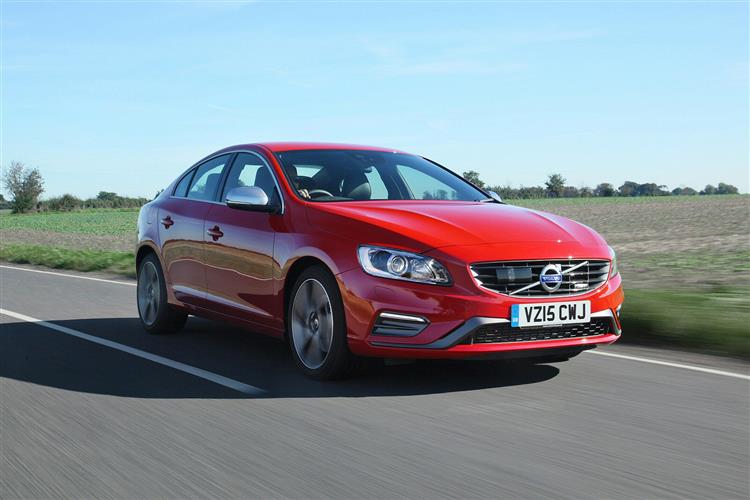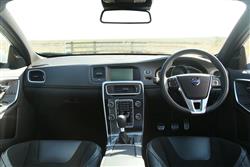SIXTY SECOND HEADLINES (some text hidden) --NONE--
By Jonathan Crouch
Introductionword count: 87
Does life really begin at sixty? If you're a potential Volvo owner, the answer may well be yes. The Swedish maker's second generation S60 saloon was, we were told at its launch back in 2010, the most dynamic Volvo ever, both to look at and to drive. By 2014 though, this design was in need of an update - and that's what it got. It's this MK2 revised model, which sold between 2014 and 2018, that we're going to look at as a potential used car buy.
Modelsword count: 17
4dr saloon (1.6, 2.0, 2.4 diesel [D2, D3, D4 & D5] / 1.5, 1.6 petrol [T3, T4])
Historyword count: 243
This MK2 model S60's design was something of a departure for a brand that has built its reputation on substance and safety rather than style and sportiness. But then something pretty radical was needed to break the German stranglehold on the BMW 3 Series-dominated compact executive market where this car must compete. At its original launch in 2010, the signs were that this MK2 S60 was potentially capable of doing exactly that, but such promise was never going to be completely fulfilled with a reliance on other people's engine technology. So, for the fully improved version launched early in 2014, Volvo brought us some of its own in a D4 diesel variant offering a combination of performance and efficiency that no rivals at the time could match. There were smarter looks too and the promise was that all of this would be matched with a greater emphasis on driver involvement. As it was, we didn't get a car that was dynamically able to take on and beat tough rivals like the BMW 3 Series and the Audi A4 in the mid-sized premium executive saloon segment, but the S60 was more affordable than those two contenders, much safer, well equipped and still with considerable appeal. This improved MK2 design sold until it was replaced by an all-new MK3 S60 model in the Spring of 2019. Does it all add up to a decent used car buy if you're shopping in this segment? Let's see.
What You Getword count: 568
With this second generation S60 model, stylist Orjan Sterner and his team set out to create something as far away from the boxy Volvo stereotype as they could get and the result is rather handsome, with a coupe-like roofline and Aston Martin-style tail flourishes. Brand marketers even go as far as to call this a 'four-door coupe' - by which they mean the kind of really rakish design you'd get in a rival like, say Mercedes' CLA-Class or Volkswagen's CC. In the metal, this is far boxier and more practical than either of those two cars, but the flowing, supposedly racetrack-inspired looks are still pleasing on the eye. It's a sleek shape too, with strong shoulder lines and a slippery 0.29Cd drag coefficient. This updated version got what Volvo describes as 'more focused and determined-looking headlamps', added to create what was intended to be a more 'expressive' front end. The S60's horizontal lines were also emphasised at both the front and rear and, together with details such as a wider grille and daylight running lights. The various changes give this car a more striking, purposeful presence. Under the skin of course, the original second generation S60 recipe is as it always was, Ford Mondeo-based, which means the underpinnings are exactly the same as those used in the brand's supposedly larger V70 estate and S80 saloon models from this era. Volvo's original marketing material for this model suggested that buyers would be so carried away by the sweeping shape that they'd be 'surprised to find this car has rear doors'. We weren't - and we don't think you will be either. Note to Volvo's marketeers: this wasn't a 'four-door coupe'. If it was, there wouldn't be the class-competitive headroom that's on offer back here. As with most cars in the compact executive segment, two adults will be comfortable but three will be a squash. In fact, a third rear seat adult will be even more uncomfortable than they would normally be in a car of this kind thanks to the narrow, curved centre seat they've to be perched upon. Out back, the 339-litre boot capacity is rather more compact than it should be - around 30% smaller than the trunk you'd get in, say, an Audi A4 from this era. Indeed, it's even smaller than the space you'd get in the saloon version of that car's more diminutive stablemate, the Audi A3. Volvo was acutely aware of this issue, which is why, as you'd expect, a 60/40 split-folding rear bench is standard and also - more surprisingly - why a fold-flat front passenger seat is also included across the range so that really long loads can be accommodated. That's an almost unique feature in this class but if it isn't enough, then your dealer will direct you towards the V60 estate version of this car, which offers a 430-litre boot extendable to 1,241-litres with the seats folded. Should this S60's trunk be sufficient for your needs, you will at least find the space it does offer to be eminently useable. We especially like the shallow hinged bootfloor compartment. Lift up the flap and you can mess up the floor with muddy stuff. Then when you remove your wellies or whatever, the flap goes down again and you don't have to worry about cleaning the boot floor. Well not immediately anyway: out of sight, out of mind and all that.
To see the full road test text contact us on 0330 0020 227
Pictures (high res disabled)

.jpg)
|
.jpg)
|
.jpg)
| |||
.jpg)
|
.jpg)
|
.jpg)
| |||

|
Scoring (subset of scores)
Category: Compact Family Cars
| Performance | |
| Handling | |
| Comfort | |
| Space | |
| Styling, Build, Value, Equipment, Depreciation, Handling, Insurance and Total scores are available with our full data feed. | |



